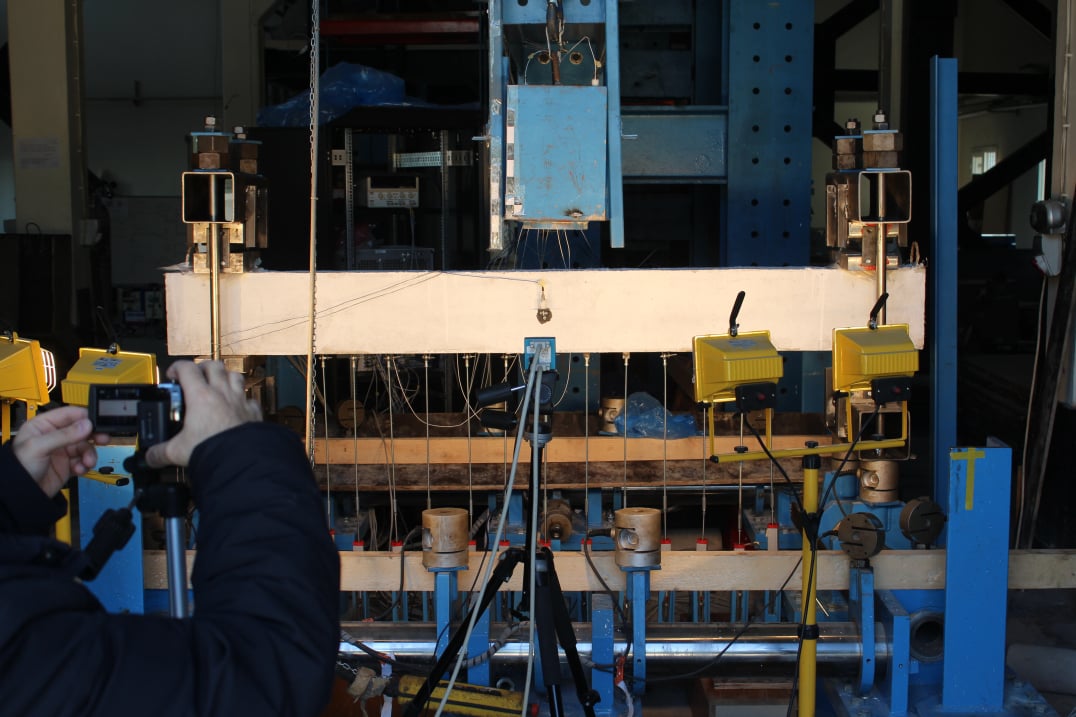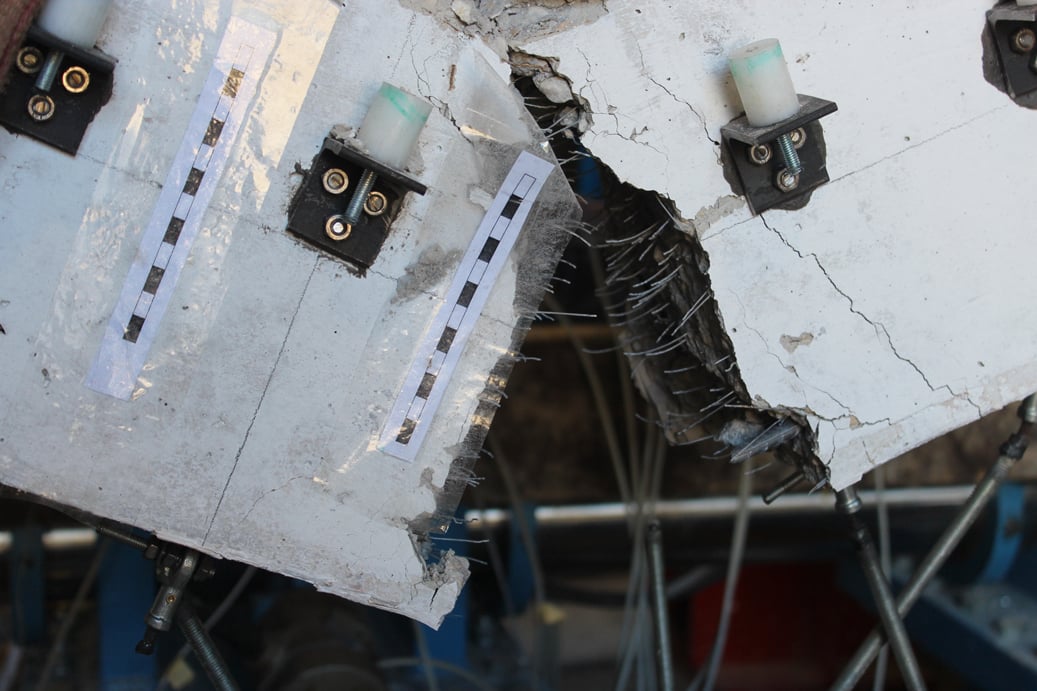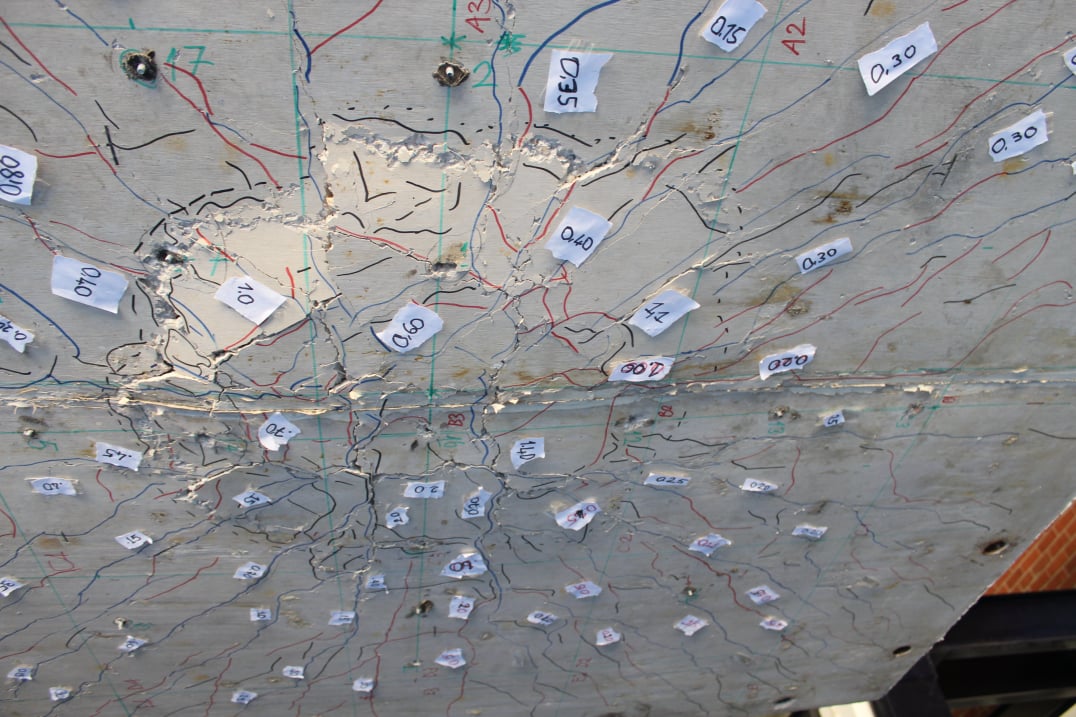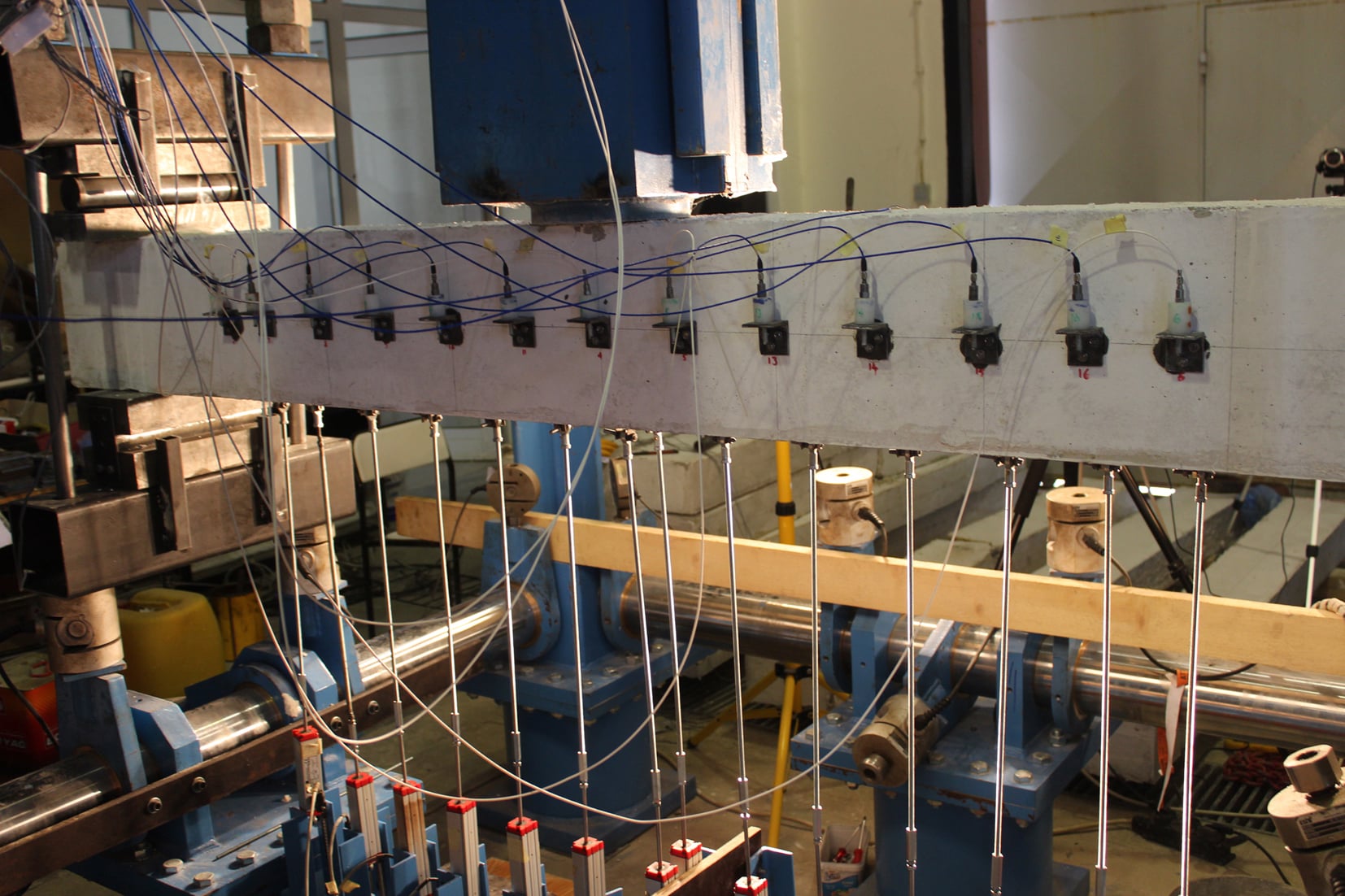Abstract
Terrorist attacks cause injuries and casualties not only due to direct effect of explosions, but also due to collapse of non-structural elements in buildings such as brick walls. Strengthening of non-blast resistant buildings to blast loads can be done using blast resistant cladding. In this study, structural behavior of panels manufactured using hybrid fiber reinforced concrete, composed of steel and synthetic polyvinyl alcohol (PVA) fibers, under blast loads was investigated and the potential use of such panels for the strengthening of existing buildings against blast loads was examined. For this purpose, 13 panels with 1700x1700x50 mm dimensions were tested under static loads and 11 panels with 1900x1900x50 dimensions were tested under blast loads. Blast loads were applied on panels by a shock tube designed and manufactured within this project. Numerical studies were also conducted. Static and blast load tests were modelled with finite element method using software LS-DYNA. As a result of the study, it was found that panels manufactured using hybrid fiber reinforced concrete had higher strength and energy absorption capacity under both static and blast loads compared to panels manufactured by using steel fibers only. Using steel and PVA fibers provided a better control of micro and macro cracking and increased the panels’ ductility. The study showed that hybrid fiber reinforced concrete panels can be used as a protective cladding for blast loads.



